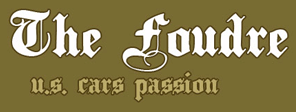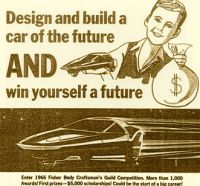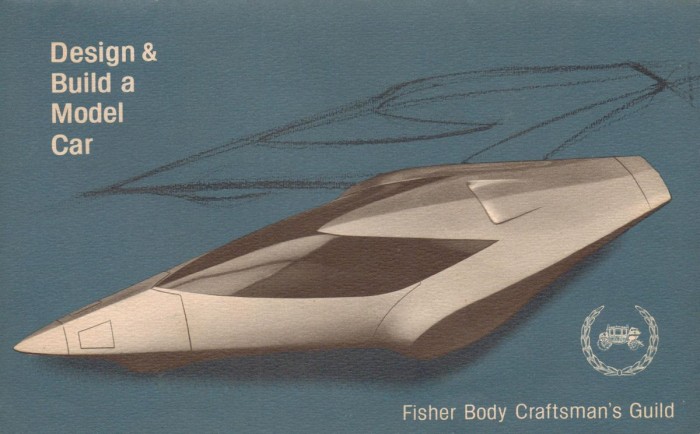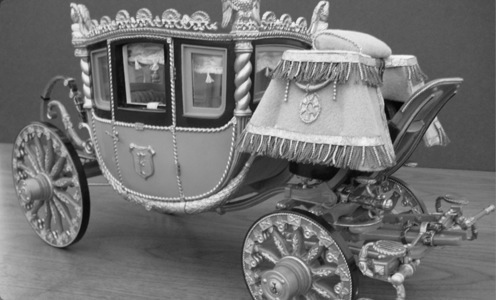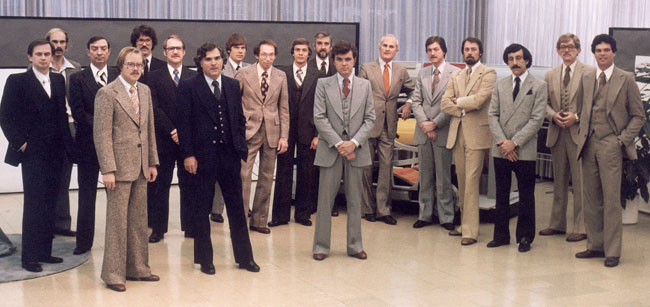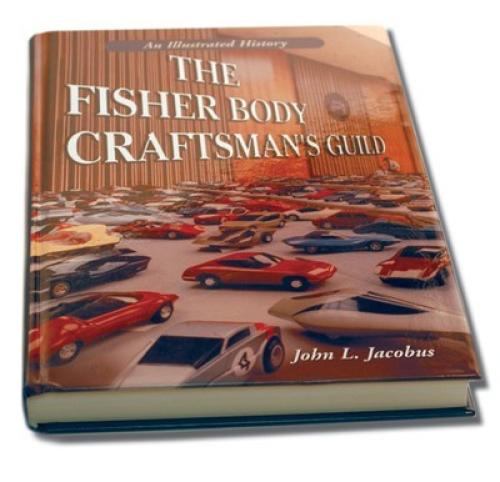As much fun as it sounds, designing and building a model car took many hours of hard work--thinking and drawing ideas; picking the best one to build; searching for clay or the right block of wood; carving or sculpting their design; constantly refining the 3-D design; making the detail parts including wheels; painting the body and assembling the parts; and, finally, packing the model to ship to Detroit with the deadline looming. This was not an easy task for a young inexperienced boy.
But the prizes for the winners were substantial--cash awards for State Winners and college scholarships for National Winners. This is how it worked. After each model was judged by a team of GM Designers and Industrial Arts Teachers, State Winners were notified and given their cash award. Regional Winners were given an all-expenses-paid trip to the 4 day Guild National Convention in Detroit. Nerves were on edge until the Annual Banquet, where, in the presence of prominent Educators and GM Executives, the National Award Winners were announced and broadcast live to anxious parents and friends. Later in the convention, these young designers would spend a morning in the GM Styling Studios talking to professional designers and seeing first hand how real cars were designed. While National Winners go home with scholarships, all the participants go home inspired.
Many scholarships are given each year to young people with outstanding athletic ability or an outstanding scholastic record. What made the Craftsman’s Guild unique was recognition and reward for young people with outstanding creative ability.
Bill Porter, a top GM Designer, now retired, said it another way, "One of the great things the Craftsman’s Guild did for American Design was that it identified talent at an early age so that these young people could proceed to get professional educations. In many fields requiring trained talent, like music and sports, the process of early identification is well established. Not so with design. Many young people with design talent do not learn of the possibilities until they are in college – thus missing out on the valuable skill-acquiring years as a teen when learning comes easiest."
The FBCG helped identify and mature a whole generation of design talent. It’s no surprise that many Guild participants, after their formal training, entered the Automobile Industry and dedicated their careers to designing and engineering automobiles. But not all. Some made their mark in Architecture, Urban Planning, Interior Design, Science, Education, Medicine and many other professions.
Chuck Jordan, winner of the 1st National Scholarship Award in 1947 and graduate of MIT, had this to say at the time of his retirement as GM Design Vice President, "I’ve always been grateful for my experience in the Craftsman’s Guild. That experience has paid big dividends. In fact, when I think about it, my life has really been one big Guild Competition, designing and modeling cars, just like I did when I was 19 – except these models are full-size and they compete with the best in the world."
Article : par Chuck Jordan & John M. Mellberg.
Credit Photos @ General Motors History & Heritage.
Denis Eveillard
Article précédent :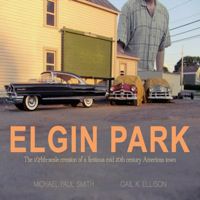 Elgin Park Michael Paul Smith's second book ... |
Article suivant : The Jalopy Journal third book ... |
